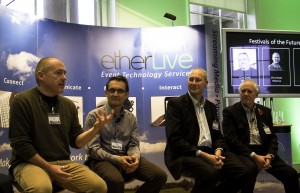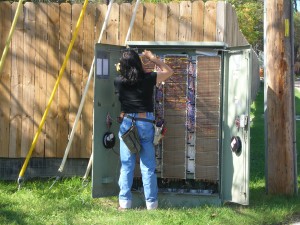I recently attended a great session by TFL on the expected traffic impact from the 2012 games. The presentation (a copy of which is available here) highlighted some of the myths surrounding the games, and the work that is taking place with businesses to lower the ‘normal’ traffic (including out of hours delivery schemes and encouraging those who can work from home to do so) thereby reducing load on the network.
Those who have events running during the period of the games will already be aware of the impact to logistics and no doubt be planning transport strategies accordingly. NB: The Games are not just London based but involve many venues all over the country from July until September. This blog focuses on some of the tools you can use with your employees whilst off site to keep them working wherever they may be.
Keeping it in the Cloud – Free online applications such as Google Docs and Microsoft 360 have dramatically changed the way companies are storing documents and collaborating. Both services allow documents to be quickly shared with pre-authorised users (within your organisation or otherwise), updated online from multiple device types (smartphones, tablets and laptops) and also include services such as instant messaging and revision tracking. A subscription model is available for those that wish to rely on the service and access advanced features such as video calling. Security needs to be considered so anything highly sensitive should remain stored in the office.
Keep connected on the move – Employees with mobile devices (e.g. tablets, laptops, etc.) can use them to access content by hopping between Wi-Fi networks or using 3G. One option is ‘Mi-Fi’, small pebble sized dongles that share out a 3G signal through a local Wi-Fi network. These avoid the cost of everyone having their own contract and are great for working on the train or during a site survey. As always 3G comes with the consideration that speeds will vary depending on how many people are using the cellular network in the area… and some rural parts of the country are still waiting for 3G coverage. Because 3G network performance is out of the control of individual companies, 3G or mobile connectivity should not be relied upon for critical services.
Work from the home computer – If employees don’t have laptops why not let them use their own computers? They can connect through remote systems to their email or documents straight from their browser and benefit from a proper chair and monitor. It may even be suitable to give the employee full access to their work desktop, in which case Logmein and Citrix are good places to start.
New ways to meet – One thing that can’t be replaced is face to face interaction with customers, however this is often not viable. So why not start encouraging more online video usage? The industry leader Skype is an excellent product that many already use. A good recommendation is to set up an account just for work purposes so you can logoff at the end of the day.
The key thing is to acknowledge transport and communications systems will be stretched at times and it’s best to put some plans in place now and offer employees flexibility to ensure everyone remains productive.





